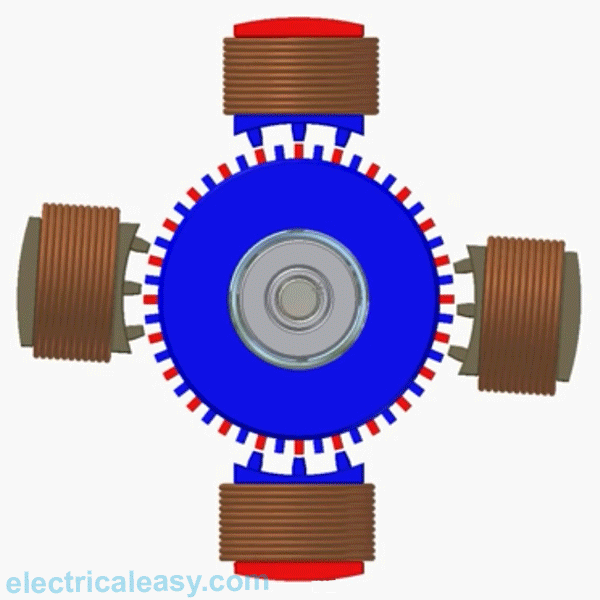Stepper motors are used for precise positioning of an object or precise speed control without closed loop feedback.
How does a stepper motor work?
The unique feature of a stepper motor is that the shaft rotates in definite steps, one step being taken each time a command pulse is received. When a definite number of pulses are supplied, the shaft rotates through a definite known angle. The rotor of a stepper motor is gear shaped and it can be of ferromagnetic material or permanent magnet. Multiple toothed poles on which field coils are wound are arranged around the gear shaped rotor. The stator poles are magnetised in the appropriate manner by using a microcontroller or microprocessor or by other means.First, one pole is magnetised by supplying the corresponding field coil. This toothed pole then aligns the rotor teeth due to magnetic attraction. Rotor teeth are slightly offset from the next pole.
At the next step, first pole is demagnetised and the second is magnetised. This causes the rotor to rotate in a fixed angle to align with the second pole and offset with the previous pole.
This was the basic working principle of a stepper motor. The rotor can be made multiple stacked to achieve more steps. Also, different types of stepping (like full step, half step or micro step) can be used for achieving more steps.
The animation below may make it easy to understand basic working of a stepper motor.
Types of stepper motors:
- Permanent magnet type stepper motor:
This type of stepper motor has wound stator poles. It has permanently magnetized rotor which is constructed in cylindrical shape. In this type, the direction of the rotor depends on the polarity of stator current. - Variable reluctance stepper motor:
It also has the wound stator same as that of permanent magnet type, but the rotor is non-magnetic. The rotor is made up of ferromagnetic material, like iron. When the stator pole is magnetised, the rotor teeth will align with the magnetised stator pole. This type of motor works on the principle of the minimizing the reluctance path of the magnetic field. - Hybrid stepper motor:
It combines features of both permanent magnet type as well as variable reluctance type motor. The rotor is of permanent magnet type and axially magnetised with radial soft iron teeth.


